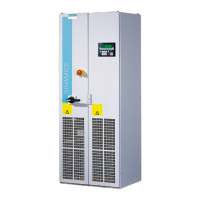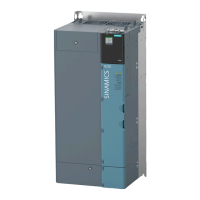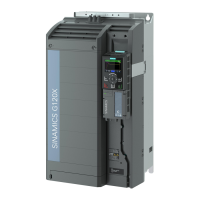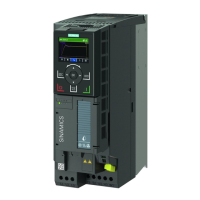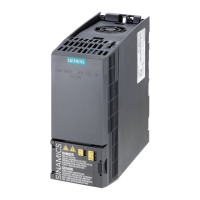Diagnostics
5.3 Fault and alarm messages
Function Manual
Function Manual, 01/2011, 6SL3097-4AB10-0BP3
111
Note
Only those messages which are listed in the indexed parameters can be changed as
desired. All other message settings retain their factory settings or are reset to the factory
settings.
Examples:
In the case of messages listed via p2128[0...19], the message type can be changed. The
factory setting is set for all other messages.
The fault response of fault F12345 has been changed via p2100[n]. The factory settings
are to be restored.
– p2100[n] = 0
Triggering on messages (example)
Select message Trigger signal
p2128[0] = 1001 BO: r2129.0
or
p2128[1] = 1002 BO: r2129.1
Note
The value from CO: r2129 can be used as group trigger.
CO: r2129 = 0 No selected message has been output.
CO: r2129 > 0 Group trigger.
At least one selected message has been output.
The individual binector outputs BO: r2129 should be investigated.
Triggering messages externally
If the appropriate binector input is interconnected with an input signal, fault 1, 2 or 3 or alarm
1, 2 or 3 can be triggered via an external input signal.
Once an external fault (1 to 3) has been triggered on the Control Unit drive object, this fault
is also present on all associated drive objects. If one of these external faults is triggered on a
different drive object, it is only present on that particular drive object.
BI: p2106 → External fault 1 → F07860(A)
BI: p2107 → External fault 2 → F07861(A)
BI: p2108 → External fault 3 → F07862(A)
BI: p2112 → External alarm 1 → A07850(F)
BI: p2116 → External alarm 2 → A07851(F)
BI: p2117 → External alarm 3 → A07852(F)

